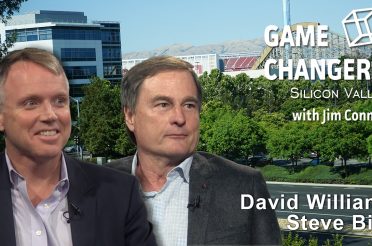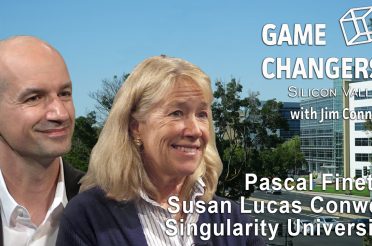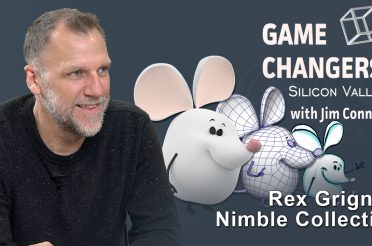Overview
The Fight for Online Travel
From 1938 to 1978, air travel was a regulated industry with the Civil Aeronautics Board authorizing schedules, price, and competition. In 1978, the government deregulated airline travel, creating competition and growth in airline travel.
By 1994, the power of the internet was being harnessed as a way to transform established distribution channels. At that time, the dominant company for making airline reservations and ticketing was Sabre, a division of American Airlines.
The obvious question was: If travel agents used Sabre to find the best route, price, and schedule, why couldn’t this feature be available to consumers?
This is the story about how American Airlines and its Sabre division struggled with the decision to launch Travelocity and compete directly with its traditional customer base, the Travel Agency sales channel.
The links to the show discussed in the show are as follows:
0:00 Evolution of Airline Reservation Systems
2:40 The first online airline reservation system
4:18 Competing with established Travel Agencies
5:00 The internal battle for releasing the first online reservation system
6:41 Early competition from Microsoft Expedia
8:00 Travelocity goes public via a reverse merger
9:12 Why Terry left Travelocity
10:02 Kayak develops vertical search for travel
11:15 The next wave of digital disruption in travel
12:48 Innovation vs Disruption
13:50 Benefits to incumbent product leadership
14:42 Follow up with Terry

Transcript
Airline travel has seen a lot of turbulence over the past 40 years from 1938 to 1978 air travel was a regulated industry with the civil aeronautics board setting schedules prices and authorizing competition your parents or grandparents can tell you about a time when arranging air travel was a time-consuming and expensive process in 1978 the government deregulated airline travel creating competition and growth in air travel services by 1994 the power of the internet was giving the airlines something to think about the software for airline reservations was available from just a few suppliers the oldest and most widely used system was Sabre developed by American Airlines as internet service became widely available the question arose if saber enabled travel agents to find the best route price and schedule why couldn’t this feature be available to consumers.
Well, there was a problem saber and other reservation systems were restricted to the airline agents and subscribing travel agents. Offering consumers online access to book flights was going to upset the primary sales partner the travel agent network. In 1996 American Airlines’ Saber division did release the first open reservation system called Travelocity. But competing with the travel agent channel carried enormous risk at that time, Saber was running on over 130,000 travel agency terminals worldwide. So the question is, how intense was the battle against a wall of naysayers claiming you’re going to destroy our business model. How does the management support a product that competes directly with a company’s primary sales channel?
Terry Jones: And internally we had lots of battles because the rest of the company knew we were losing money building this online startup. So i had to do a whole bunch of things. I moved out of the building to create our own culture. I fought with hr to hire people from the outside and we shed various corporate departments you know we didn’t want to use their IT, We didn’t want to use their purchasing it was too slow!
My name is Jim Connor welcome to Game Changers Silicon valley
My guest for this show is Terry Jones who was given the job of determining how the American Airlines Saber reservation system could be made available to consumers on the internet.
Terry welcome to the show. You led what is arguably the most dramatic transformation in the travel industry and you did it from within large corporate airline American Airlines. Can you give us an overview of the innovations created and the resistance encountered in building the first open travel reservation system?
Well, it’s great to be with you. You know it wasn’t just a flash of insight but what happened was, I worked in the saber division of American Airlines in the Saber division automated travel agents. We had 40,000 automated travel agents as our distributors and along the way, we invented a product called Easysaber that put saber on AOL and Compuserve and other networks and you could make a reservation but you couldn’t get a ticket. To get a ticket you had to ask the travel agent to issue the ticket. And that ran for almost eight years and one summer the travel agents woke up as these online networks grew and said: You should turn that off you’re selling bullets to the enemy and luckily Bob Crandall our chairman said No and he said, give it to Jones, he’s over at IT. I was the CIO and he used to be a travel agent. So I went down and met these 12 people and the first thing I asked was, Why is it on the internet? It was 1996, the internet had just been deregulated. And we put it online and it grew like a weed in the spring, extremely successful. And we had to decide at one point to become a travel agent ourselves our network of travel agents really wasn’t issuing the tickets. They weren’t accepting the messages that were coming in from Easy-saber. They didn’t quite understand it. So we made the decision to become a travel agent ourselves, to compete with our own distribution network and that was the beginning of Travelocity.
You must have had some real pushback I imagine from various departments. I mean, first of all, all the customer service salespeople who worked with a travel agent must have gone bonkers if I can use that word. How did you deal with that?
Well you know Bob Crandall, our chairman was a great guy and he said look somebody’s going to do this, it may as well be us. We have the right tools, we’re Saber. We should do this. And internally we had lots of battles because the rest of the company knew we were losing money building this online startup and of course, they could make profits right away where ours was down the road. So I had to do a whole bunch of things. I moved out of the building to create our own culture I fought with HR to hire people from the outside. We shed various corporate departments you know, we didn’t want to use their IT, we didn’t want to use their purchasing it was too slow. We liked our legal department they kept our competitors at bay. But we had to make a bunch of changes which I discussed in my book In Innovation in order to be successful and to really fight off the corporate folks who weren’t interested in our success.
How long did it take from the time, let’s say, Bob Crandall said, I like this idea let’s pursue it we should be doing that?
What happened is my boss was running the Saber division at the time decided that we should have a debate and we actually had a formal kind of Harvard debate. I was not allowed to participate, it was all senior executives in the Saber division and it was should we sell this thing or keep it. And we could have made two or three hundred million bucks and in the end, we decided to keep it. And that was a very smart idea because it got all the grievances out on the table and after that people were kind of behind us. Years later I asked him what would he have done if they actually voted to sell it and he said well I wouldn’t sell it but I don’t know how the heck I would have come through that. But he needed to get all the naysayers to stop saying no. By that time Microsoft had announced Expedia so we had another intrapreneurship company launching another travel company. And we had to battle them which was a huge battle so everybody decided let’s focus on the external enemy rather than the internal one which is always a good way to get people’s attention.
So at the time then Expedia came on the scene Travelocity was already an independent company out there as a travel agent selling tickets I believe that’s the right?
Well, we weren’t independent yet, no but what happened was that they launched Expedia and we were very worried that they were going to build travel into the browser. They were building other products in the browser at the time and they had all the browsers share or most of it. Netscape had some and so we said we’ve got to get more customers. We did a big deal with Yahoo, a big deal with Netscape and we wanted to do a deal to get the AOL traffic, and the only way we could do that was to go public. We actually bought the company, another travel agency that had the AOL traffic. They were a public company so we became public through a reverse merger. We didn’t even raise money but we needed to find a way to fight Expedia by getting more traffic from AOL. American Airlines was the majority owner at that point then of the traveler and then later on it went as a public company on its own? Well, no we were a partial public company and then Saber spun out of American Airlines, the Saber division spun out, became completely independent, but we were still 70 owned by Sabre but we’re public. Eventually, after several years, Sabre said we want this company back, we want Travelocity back because it’s too important to our future to leave to the public markets. As CEO, of course, I had to run it for the public shareholders, not for Saber and I made some decisions that they didn’t like so much. So one day I got a note under the door and it said: Form a special committee we’re going to buy you back and they took it private.
How did you or they determine the price of Travelocity at that point for the repurchase?
Well, it was public so it was, you know, it’s fairly easy they had to pay a premium over the public price. We had a big debate, I didn’t have a lot of ammo to get the price up and in fact, they later were sued and had to raise the price a bit. Some of the shareholders sued. But yeah, you don’t have much of a negotiating position with your 70 percent shareholder.
So then what happened to you? You had this experience where you for whatever reason saw this opportunity said why aren’t we doing this early in the game, 1997, got out there you’re doing it did you stay with it or what was your next step in your career?
No, I decided to leave, what happened was that we had a clause that we would get paid out when the company went private, and the only way my staff could do that was to leave the company. And I said to the guys who acquired it, You’re crazy you know you don’t want all these people to leave and they said well you know we don’t want them to get paid out either. So they all quit and got money. And I just thought I’m not going to run this thing without my team and I thought Sabre was going to screw it up anyway, which they did. They paid a billion two for the company and sold it later for 200 million. They ran it in the ground so I left and became a speaker on innovation and change and disruption and a consultant and an author and later went to work for General Catalyst Partners in Boston. I was advising them on travel assets and we came up with this idea for vertical search for travel. Travel didn’t have a vertical search component at the time and General Catalyst decided to fund that idea. They found a great CEO and CTO. I became Chairman of the Board and that became Kayak.com. I was chairman there for eight years until we took it public and sold it eventually to Priceline for 1.8 billion. So that was a different experience and also a great ride. That’s kind of remarkable because I remember Travelocity, and I remember Expedia. I remember using both engines and Kayak came along and I thought to myself, well I’ve got these other two engines why do I need Kayak. But you did a much broader search is that correct? Well, we did and we weren’t a travel agent so what we looked at, it was during a dinner with the former head of the former senior guy from Expedia, a former senior guy from Orbitz, and myself and a VC. And we said, look these online sites like Travelocity are only converting six to seven percent of visitors into sales. They’re using us to find low prices and then they’re going directly to the airlines or hotels to buy. Why don’t we build a site where we search everything and you can buy direct. And that’s what we did. We were a search engine but we charged a click-through fee, not a commission, and when you clicked, not like google you didn’t go to the first page, you actually went to the last page and just put in your details and you could buy a ticket. So extremely high conversion, a great user interface, super fast and we garnered a lot of market share pretty quickly, particularly with our mobile app which has something over 60 million downloads.
So after Kayak what was your next experience.
Well you know I’ve been on now 19 corporate boards seven of them public, so I’ve done a lot of work with startups. I wrote a second book on disruption that’s called Disruption Off it’s about digital disruption and then I got a call from Ginny Rometty’s office at IBM, the chairman, and they said can you come to teach IBM Watson about travel which was attempting to use natural language search image analysis and text analysis to really change the travel UI. We did that as a B2B company. It turned out we were way too early in travel, travel is still pretty far behind in deploying AI but it needs to change because the user interface looks pretty much like it looked when we designed it in 1996; Where do you want to go, when do you want to go there.
My best read of your premise or your thesis is that, if I understand it, forget about disruption, engage innovation? Is that accurate?
Well, disruption and innovation are just two sides of the same coin. The only reason you call it a disruption is because you didn’t do it. If you did it it would be an innovation right. So you know, that’s the antidote to disruption, you have to look in my book I talk about 10 new technologies, you know AI, Cloud, 3D printing, robotics, lots of new tech and I talk about how they’re being deployed to change industries and new business models that are being deployed as well. The first part of the book is sort of to scare the heck out of you and the second part says what do you do about it. And really the second part is in the large corporate sense becoming more innovative and using these products to make sure you don’t get disrupted. Now you can also flip the handbook around and say it’s a pretty good primer for startups to look at where to disrupt those who are already in power. Well, you make a great point that if you’re the incumbent or one of the incumbents you’ve got the resources you just have to now think about it a little bit more clearly of how to bring pieces together. Think about it! You have everything a startup with a kill for. You have capital you have factories, you have a supply chain, you have salespeople, you have a brand, you just maybe don’t have anything new. You know as the CEO of Panera Bread said, sometimes your delivery muscle gets much stronger than your discovery muscle. And I get it, you know I’ve been CEO and Chairman of public companies. It’s all about the quarter right. It’s a lot easier to keep pumping things out and not take a risk on something new. But there is an end to that road, eventually, you run out of runway.
Terry this has been a fascinating conversation about how Travelocity emerged from Saber systems at American Airlines. Let’s give our viewers a way to follow up with you.
Sure my website is tbjones.com, you can contact me there, you can look at videos of my speeches, and you can buy my books on amazon.com, On Innovation and Disruption Off. They’re available in Kindle, audio, and paperback. Well, I want to wish you every success going forward thank you very much. Thanks a lot, great to be with you.
Thanks for joining us in this show you can follow the outcome of this conversation in a second show titled the wrong side of a digital transformation. I want to take a moment to welcome an influx of new subscribers from the Cincinnati, Ohio area. We appreciate your support of the show. You can also register for announcements about upcoming shows at our website gamechangers.tv. If you listen to podcasts, you can find us under the title Game Changers Silicon Valley. We look forward to your continued engagement and participation in upcoming shows
Contact Info
Terry Jones : https://tbjones.com
Jim Connor : jconnor@gamechangers.tv
Website Link - : https://tbjones.com
Best known for founding Travelocity.com and serving as founding Chairman of Kayak.com, Terry Jones has become a powerful voice in the world of entrepreneurship through his numerous speaking engagements and the publication of his books, Disruption Off and ON Innovation. His career path has established him as a thought leader on innovation in our increasingly digital world.
A graduate of Denison University in Granville, Ohio, Jones, began his career as a travel agent, spent 24 years at American Airlines in marketing and information technology, capping his career as Chief Information Officer of its SABRE division. While at SABRE he led a team of six working on a project that became Travelocity.com. Jones served as CEO of Travelocity for seven years transforming it into a public company with three billion dollars in travel sales.
He left Travelocity when the company was taken private and became part of the founding team at Kayak.com, a company that yet again revolutionized how travel was purchased. He served as Chairman of the company from its founding until it was sold to Priceline for $1.8 billion dollars in 2013. Today he is the managing principal of ON Inc, a consultancy he founded to help companies in their transition to the digital economy. As a speaker, author, venture capitalist and board member Terry has been helping companies use the tools and techniques he’s developed to keep up with this rapidly changing world. His programs on innovation, disruption, marketing and AI are always thought-provoking, entertaining, and customized. Attendees walk away with inspired ideas and concrete action items to implement in their companies.
He serves on the boards of Boingo, Kenzie, Sonicwall and Camping and Education Foundation. He has previously served on the boards of Entrust, Overture, La Quinta Hotels, Luxury Link Cognite, Smart Destinations, and EarthLink.
He is a venture capitalist with General Catalyst and Sierra Angels.
Website for Terry Jones








Leave a Reply
You must be logged in to post a comment.